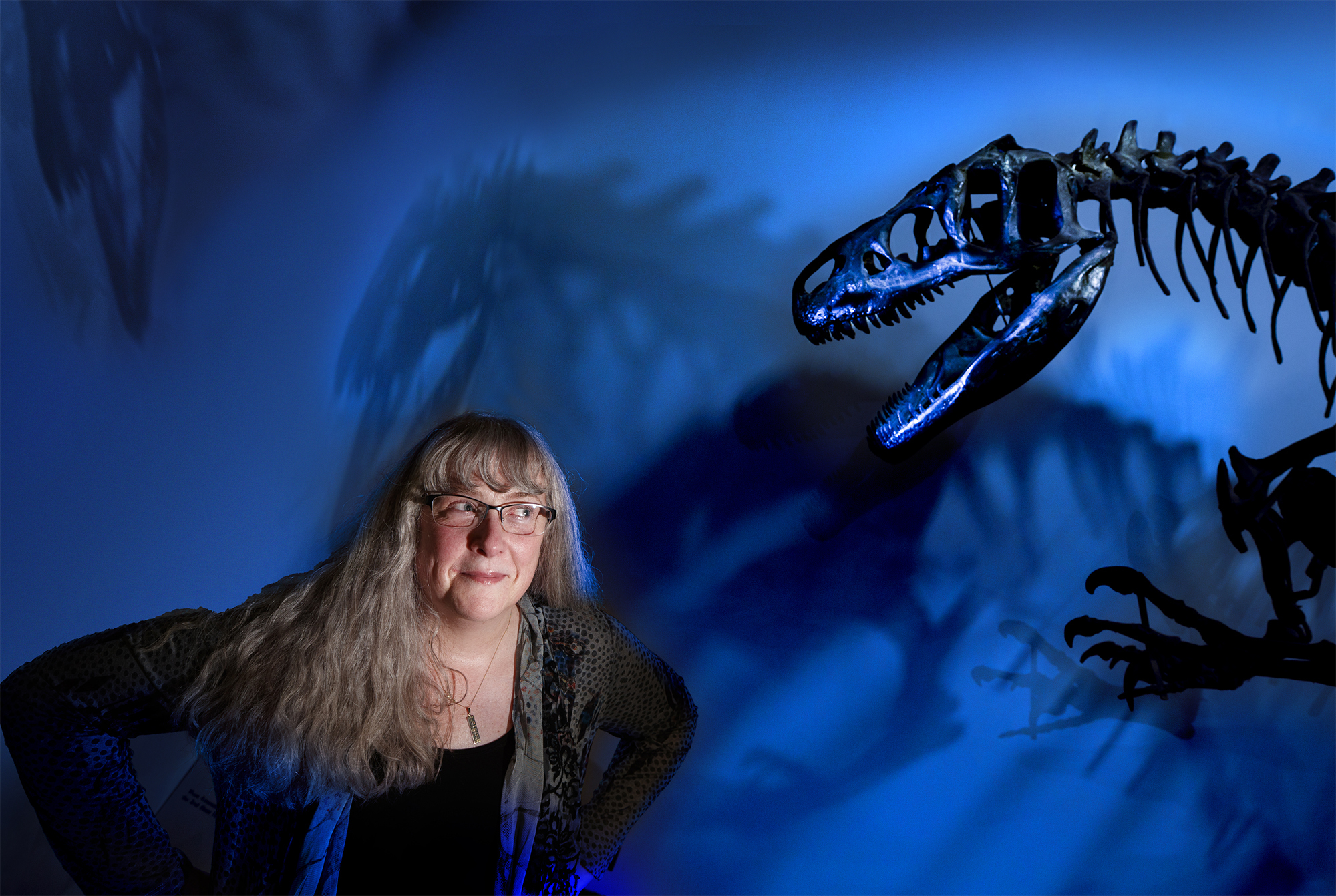
The unrivaled growth spurts of gargantuan dinosaur species — some of which skyrocketed from less than 35 pounds to more than 15,000 — likely explain a scarcity of medium-sized species in prehistoric ecosystems, says a study from the University of New Mexico and University of Nebraska–Lincoln.
Published Feb. 26 in the journal Science, the study found that communities with massive dinosaur species — so-called megatheropods that weighed more than 2,200 pounds as adults — often lacked carnivorous species weighing between 2,200 and 220.
The findings suggest that juvenile Tyrannosaurs and young, developing offspring of other megatheropods outcompeted even the adults of intermediate-sized species for mutual prey as they moved up the food web, the researchers said.
“Dinosaur communities were like shopping malls on a Saturday afternoon — jam-packed with teenagers,” said Kat Schroeder, doctoral candidate at New Mexico and the study’s lead author. “They made up a significant portion of the individuals in a species and would have had a very real impact on the resources available in communities.”
The ability of fast-growing megatheropod offspring to temporarily occupy a niche in an ecosystem, then size out of that niche and into multiple others on the way to adulthood, could also help explain the conspicuous lack of diversity among dinosaurs more generally.
“There are just not that many dinosaur species overall, which is weird for a group that dominated the planet for about 140 million years,” said Kate Lyons, assistant professor of biological sciences at Nebraska.
Schroeder, Lyons and New Mexico’s Felisa Smith compiled fossil and physiological data on more than 550 species from 43 dinosaur communities that spanned all seven continents. When charting the number of discovered species per community by the average size of those species, an unmistakable gap emerged: many species under 220 pounds, substantial numbers of megatheropods over 2,200, but few species in between.
That glaring 2,000-pound gap was probably both created and filled by megatheropods under the age of 16, the researchers said, when many species reached sexual maturity. After dividing the gap into various weight classes, the team calculated that juvenile megatheropods made up more than half of the overall dinosaur biomass in every one — akin to a boxer dominating flyweight, lightweight and middleweight before eventually seizing the belt at heavyweight.
“That essentially says that megatheropods were consuming 50% or more of the energy available to dinosaurs at a respective body size, leaving very little for other species to consume,” Lyons said. “And if they were consuming the majority of the energy at that body size, then they were going to be outcompeting anything else that might try to feed at that size, as well.”
The team also compared the weight distributions of dinosaurs in the 43 communities to random distributions drawn from the global community of dinosaurs as a whole. Tellingly, the distributions of plant-eating dinosaurs — those not competing for food with megatheropods — looked essentially the same in both cases. The global community of carnivorous dinosaurs, meanwhile, featured a much higher proportion of medium-sized species than did most of the communities that included megatheropods.
Other telltales emerged, too. Of the 43 communities, the signature size gap was missing only in the few that either lacked a megatheropod species or were overrun by species less than 220 pounds. Where that gap did manifest, it generally followed the size of the apex megatheropod — meaning that it increased as megatheropods evolved from the beginning of the Jurassic Period through the end of the Cretaceous, which also marked the end of all non-avian dinosaur life.
Lyons said the team’s evidence clearly indicates that the unprecedented developmental tracks of the largest carnivorous dinosaurs — from fox-sized, insect-eating hatchlings to 40-foot-long, dino-devouring monstrosities — ran roughshod over the species caught in the middle.
It also offers a stark contrast to the planet’s current heavyweights, mammals. Whereas dinosaurs boasted many more large species than small, mammals claim more small than large. And because almost none hatch from eggs, as dinosaurs did, even the largest mammal species have much less growing to do before reaching adulthood.
Partly for that reason, mammal communities tend to feature roughly equal proportions of large, intermediate and small species, the researchers said. But if Kruger National Park — a massive wildlife preserve that houses elephants, giraffes and rhinoceroses — were to suddenly adopt a megatheropod-esque size gap, the park would house no carnivores ranging between the 420-pound African lion and the 9-pound bat-eared fox.

Lyons said the disparities, while jarring, actually reinforce the principles used to explain the compositions and size distributions of modern-day ecosystems.
“We’re able to take ideas about how mammal communities assemble and make predictions about what you’d expect to see in a system in which you have these niche shifts — and then show that what we expected is what we find,” she said. “To me, that’s pretty amazing, because it confirms a lot of basic ideas we have about how life works in the present.
“It shows that these theories about how species come together in communities can actually apply to this really, really different system — that we are really getting at fundamental rules of life.”








